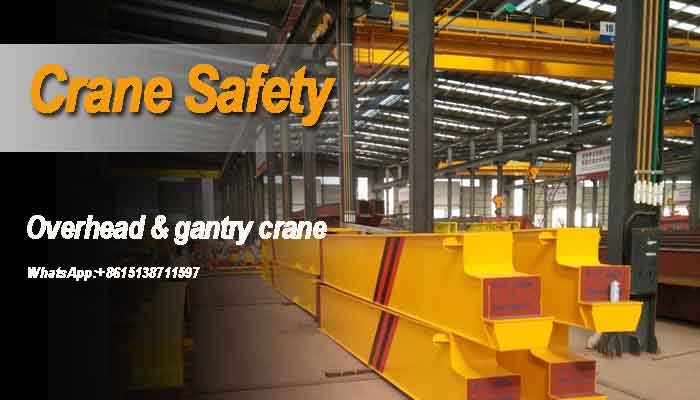
Overhead Crane Safety Requirements, Hazards & Preventions
An overhead travelling crane is a machine that lifts and lowers loads and moves them horizontally, with the hoisting mechanism built into the machine. Many businesses employ overhead cranes to transport big and oversized goods that other material handling technologies can't handle. Overhead cranes have a railed support structure called a bridge, as well as a wheeled trolley that runs horizontally across the bridge. The hoist, which is coupled to the trolley and used to accomplish the lifts, is the other main component of an overhead crane. Gantry, semi-gantry, cantilever gantry, storage bridge, and wall cranes are all examples of overhead cranes.
The Occupational Safety and Health Administration (OSHA) regulates overhead crane safety under 29 Code of Federal Regulations (CFR) 1910.179. This rule addresses the general requirements, design, inspection, maintenance, and operations of overhead and gantry cranes.
General Requirements
- All overhead and gantry cranes installed must comply with the National Standard Safety Code for Overhead and Gantry Cranes. Overhead travelling cranes can be modified and their load capacity rerated as long as the changes and accompanying structure are thoroughly verified for the new rated load by a certified engineer or the equipment manufacturer.
The overhead crane's rated load must be clearly indicated on either side of the overhead travelling crane; if more than one hoist is present, each hoist's rating must be clearly shown.
Above and to the side of cranes, clearance must be maintained.
If there are no walls or structures between the two bridges, walkways cannot be put in the crane operating zone because they would jeopardize employee safety. Parallel cranes must have appropriate clearance between them if there are no walls or structures between them.
Only authorized individuals are allowed to operate cranes.
Design Requirements
The cab and its controls, as well as the cab's lighting, foot-walks, ladders, and stairways; bridge and trolley bumpers; hoist, holding, trolley, and bridge brakes; electrical components; hoisting equipment; and warning devices are all covered by OSHA's design criteria.
Inspection Requirements
Routine inspections are required due to the size and weight of the objects often lifted and moved by overhead cranes in order to assure continuing safe operation. Before the crane may be used for the first time, it must undergo an initial examination (new or altered). Overhead cranes require two types of inspections after they are put into service. Frequent inspections take place on a daily to monthly basis, whereas periodic inspections take place once a month to once a year. The two types of inspections are designed to analyze essential crane components and assess the level of wear, degradation, or malfunction.
Frequent Inspections
Items to be Inspected
Frequency
Functional operating mechanisms for maladjustment
Daily
Deterioration or leakage in lines, tanks, valves, drain pumps and other parts of air or hydraulic systems
Daily
Hooks with cracks or deformation (visual)
Daily
Hooks with deformation or cracks (written record with signature of inspector and date)
Monthly
For severe wear, twist or distortion interfering with correct function, or stretching beyond the manufacturer's specifications, inspect hoist chains and end connections (visual)
Daily
For severe wear, twist or distortion interfering with correct function, or stretching beyond the manufacturer's specifications, inspect hoist chains and end connections (written record with signature of inspector and date)
Monthly
For wear, broken strands, and other issues, check the running rope and end connectors (written record with signature of inspector, rope identity and date)
Monthly
Excessive wear has functional working processes.
Daily to Monthly
Reeving the rope according to the manufacturer's instructions
As recommended
Periodic Inspections
Items to be inspected:
- Members that are deformed, fractured, or corroded
- Sheaves and drums with loose bolts or rivets, as well as cracked or damaged sheaves and drums
- Pins, bearings, shafts, gears, rollers, and locking and clamping devices are examples of worn, fractured, or distorted parts.
- Wear on brake system parts, linings, pawls, and ratchets is excessive.
- Load, wind, and other indication inaccuracies
- Motors that are electric, gasoline, diesel, or other forms of motors that are not performing properly.
- Excessive wear and stretch of chain drive sprockets Deteriorated electrical components, such as pushbuttons, limit switches, and contactors
- In addition to the initial inspection, OSHA mandates that all new and modified crane functions be tested for the following:
- Overhed crane hoisting and lowering
- Crane trolley travel
- Crane bridge travel
- Crane safety limit switches, locking and safety devices
Maintenance Requirements
It is necessary to implement a preventive maintenance schedule based on the crane manufacturer's recommendations. Inspections must be done if any damaged components or dangerous circumstances are discovered during the statutory inspections before the crane can be operated. Only authorized employees are permitted to perform the necessary maintenance and repairs. To de-energize the crane, employ the standards of overhead crane safety, such as hazardous energy control or lockout/tagout.
Operation
To ensure overhead crane safety, observe the manufacturer's recommendations when operating. Under 1910.179(n), OSHA outlines weight handling rules, which include the following:
- Load Dimensions Attaching the Load
- relocating the burden
- Limit switch for the hoist
Overhead cranes hazards & preventive meatures
Overhead cranes are used by many organizations in the manufacturing and construction industries to lift and carry items. These systems make operations easier and safer when properly installed and operated. Every year, however, overhead crane accidents result in serious injuries and deaths. To avoid these calamities, workers must be aware of potential hazards that may arise during operations and follow safety procedures to avert them.
There are a variety of risks associated with cranes in general. Large lift systems, such as tower cranes and mobile cranes, are involved in many incidents. However, there are risks associated with all types of cranes, including overhead cranes, and all aspects of crane operation.
According to an analysis of overhead crane incidents, there are three basic safety hazards that every organization that uses overhead lift systems should be aware of in order to keep its employees safe. To prevent these hazards in the job, it's critical to be familiar with them and learn to spot them. Electrical risks, overloading, and items falling/slipping from overhead hoists are the three most prevalent hazards associated with overhead cranes.
The descriptions, potential risks, reasons for accidents, preventative strategies to avoid them, and applicable OSHA standards are included in the following analysis of each hazard. The qualifications of crane operators are one thing that all prevalent risks have in common. It is the crane owner's and job supervisor's obligation to guarantee that crane operators are competent and qualified for the work. To learn more about OSHA's training standards and minimum competent personnel norms, go here.
Electrical Hazards
According to OSHA, over half of all overhead crane accidents are caused by machinery colliding with a power source while in operation. The unintended contact of any metal part of a crane with a high-voltage power line is known as power line contact. When the crane is moving objects near or under electrified power lines and the hoist line or boom comes into contact with one of them, power line contact is most likely. When the crane comes into contact with the electricity line, the person who gets electrocuted is usually touching it. However, the danger does not stop with the operator. It affects everyone in the immediate area.
Multiple deaths and injuries can happen from a single interaction with electrical lines. Nearly 200 individuals die each year as a result of power line contact, with roughly three times as many badly injured. The majority of victims are guiding the load at the time of contact, although everyone on the job site is at danger.
Most power line interactions occur as a result of a lack of safety planning and preventative steps taken to avert hazards. One of the most effective accident deterrents is planning. Before any cranes arrive on a jobsite, it's critical to determine who is in charge of pre-job safety planning.
Cranes should also be maintained away from hazardous working locations; OSHA and ANSI both specify acceptable distances between operators and a power source when working on a construction site. Danger zones are defined as areas that are considered hazardous, and crane operators should be made aware of any potential danger zones. Within a 10-foot radius of a power line, a dangerous work area—or danger zone—must be conspicuously indicated on the ground with insulated barriers, fences, tape, and other means. This will provide employees with visual cues to ensure that the crane is always positioned such that the boom and hoist line do not enter the danger zone.
OSHA also requires overhead crane operators to use caution when working near electrical lines, even if they are not inside the 10-foot radius. This means that until the electric company advises them differently, operators should treat all power lines as energized. When traveling near electrical lines, operators should also maintain a safe speed.For loading and unloading, crane booms or truck-mounted trolleys with an electrical remote control system can be extremely risky. The operator holding the control box is usually electrocuted quickly if the boom comes into touch with a power line. This equipment should never be utilized in close proximity to electricity lines. When operating near electrical lines, a non-conductive, pneumatic, or radio remote control system is a much safer option.
Overall, proper training for operators and personnel is critical in order to prevent risk zones where electrocution can occur. When maintaining the required clearance visually is challenging, operators should have colleagues nearby to assist them. Ensure that all ladders, tools, and systems are non-conductive, and request that power lines be de-energized, grounded, or insulated anytime humans are working near them.
Overloading
According to OSHA, exceeding the crane's operational capacity is responsible for 80% of all crane upsets and structural failures. When a crane is overloaded, structural tensions occur, which might result in irreversible damage. Overloading can be caused by swinging or rapid drops in the load, employing defective components, raising a weight beyond capacity, dragging a load, or side-loading a boom.
According to OSHA, one crane upset occurs per 10,000 hours of crane operation. Almost 80% of these mishaps are caused by predictable human mistake, such as when the crane operator inadvertently exceeds the crane's lifting capacity. Overloading is most common when cranes are operated by people who aren't properly trained. Operators frequently make the mistake of believing they can rely on instinct or expertise to decide whether a load is too heavy. Any crane operator must be aware of the load's weight as well as the crane's capacity. Load-measuring devices, for example, can considerably reduce the risk of overloading and operator incompetence when used in training and planning.
OSHA mandates that all crane operators receive formal training, although certification is only necessary for operators operating equipment with a maximum manufacturer-rated capacity of more than 2,000 pounds. Employees who aren't qualified can only operate equipment as operators-in-training under the supervision of a professional trainer. On-the-job training is a wonderful preventative tool provided the trainer is qualified, and formal training should ensure a working knowledge of crane load charts.
Most crane safety programs spell out the qualifications for competent workers, and it's a good idea to familiarize yourself with them. Cranes have advanced to the point that they can carry heavier loads further and quicker than ever before. Today's operator must be well-versed in load dynamics, lifting capacity in various configurations, and the situations under which such lifting capacities are valid.
Materials Falling
Material falling from high cranes is a serious hazard at any workplace or job site. Serious injuries or fatalities can occur as a result of visual impairment, two-blocking, slippage, mechanical failure, or operator incompetence. If materials are not adequately secured, for example, the load may slip and fall on nearby workers or cause significant property damage. Unwanted material movement in larger or mobile cranes can pinch or crush employees involved in the rigging operation.
According to statistics, approximately 20 persons died in 2012 as a result of overhead hoist incidents. Because the loads hoisted by overhead hoists are typically hefty, they can cause catastrophic damage if they fall. Slings and attachments that aren't securely fastened can pose a serious safety risk, and when objects start to slip, they'll eventually tumble to the floor below.
Maintaining hoists on a regular basis is one technique to lessen the risk of materials falling. Load testing ensures that you know how much weight the hoist can lift and helps to keep the hoist in excellent operating order. When it comes to big machinery, maintenance should always be taken seriously. An overhead crane's hoist can be severely damaged if a moving part wears out or breaks. Maintaining the hoist and overhead crane on a regular basis ensures that they are in good operating order and that all operations function smoothly.
Aside from maintenance, one of the biggest causes of accidents with overhead hoists and cranes is inappropriate fastening of the cargo or the slings that carry the load. The objects can slip out, tip, and eventually tumble to the ground below if the load or sling holding the load isn't correctly secured. Machinery can potentially malfunction unexpectedly and dump a big load due to mechanical failure. OSHA requires crane operators to conduct daily checks to decrease the danger. When mechanical issues emerge, operators should follow the lockout/tagout technique to prevent the crane from being accidentally started or moved until the issue is resolved.
When working near overhead cranes, employees should always wear suitable head, foot, hand, and eye protection. The crane operator, as well as any personnel below, should be mindful of their surroundings at all times and should never wander under a lift. Before leaving the lift or during idle moments, a crane operator must always drop a weight to the ground. He or she should never lift the burden higher than necessary for clearance when shifting objects.
When using a hoist, suitably qualified individuals in the region should be aware that they are working in a potentially hazardous environment. Employees will be more aware of a hoist operating above their heads if "Hoist Danger" signs are placed throughout the work area. Workers should be taught to keep their distance from the hoist and never walk beneath loads hung in the air. Employees should never be raised or transferred on a hoist, and hung loads should never be moved over them.
When using overhead cranes, careful hoist operation is another crucial safety element to consider. The individual in charge of the hoist should be well-educated and qualified. When the crane is moving too quickly or jerking the hoist when it is carrying a big weight, it might be dangerous to the crane operator and nearby personnel. Changing or reversing direction should be done gradually and with caution. Heavy loads can leak if you reverse direction, and swinging the load is quite dangerous. To avoid potentially harmful circumstances, operators and controllers must keep 100 percent focus on the work at hand.
Hoist & Cranes for General Use
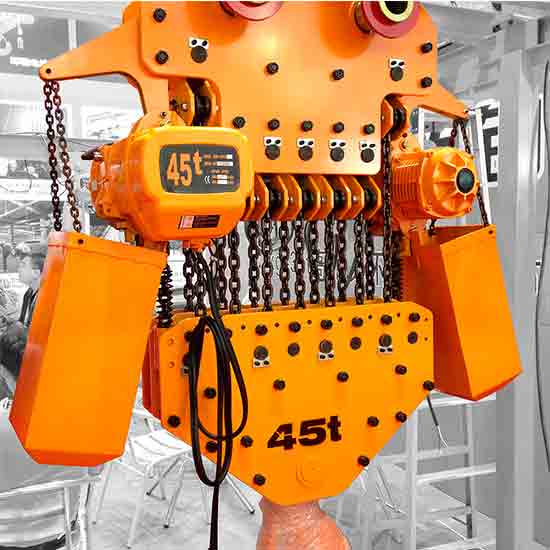
Electric chain hoists mounted on hook, lug, manual or electric hoist trolley for types of electric chain hoist cranes with capacity of 500kg, 5 ton, 10 ton, 32 ton.
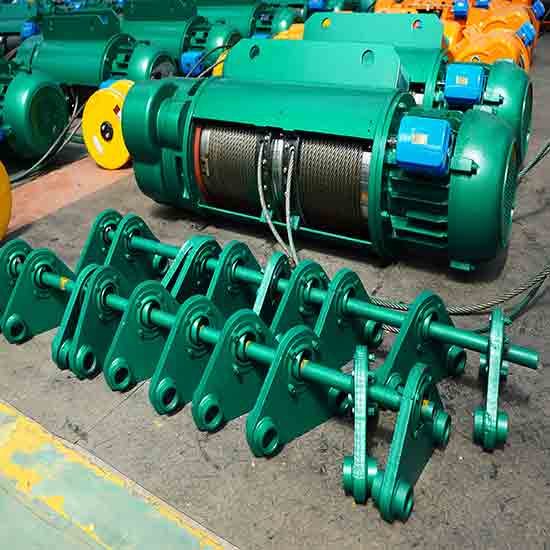
Types of wire rope hoists designs for overhead hoist cranes- explosion-proof cable hoist, low profile wire hoist & single & double girder hoists for your hoist cranes.
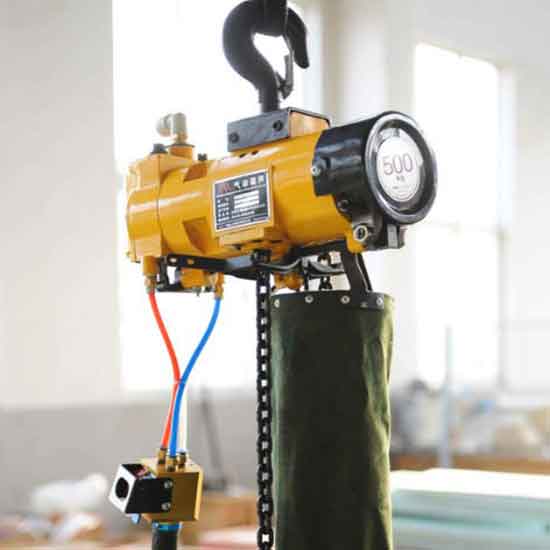
Safe & fast air operated hoists. Air hoist & pneumatic hoist is a compressed air powered hoist & air operated hoists, various hoist designs,wide specification, good price.
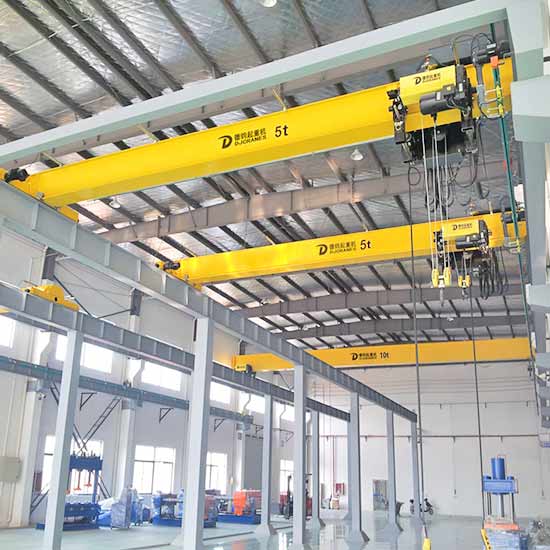
European standard overhead hoist crane, Small overhead crane:European single girder overhead cranes, compact FEM hoist crane design, small & light overhead hoist crane.
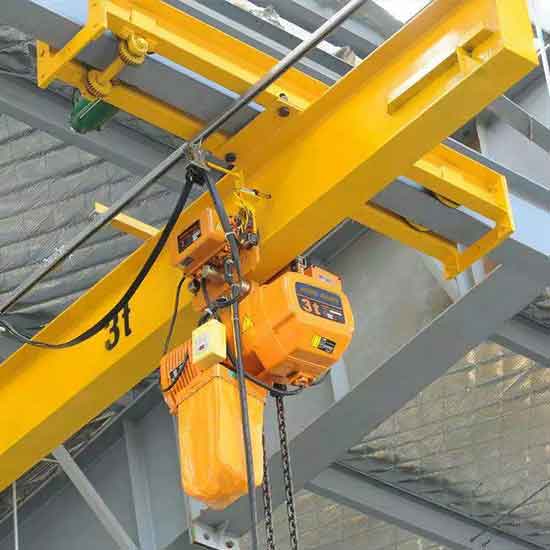
1 ton -10 ton underhung bridge crane, light single girder overhead crane design, suspended on overhead roof, free floor space, economical underhung crane.
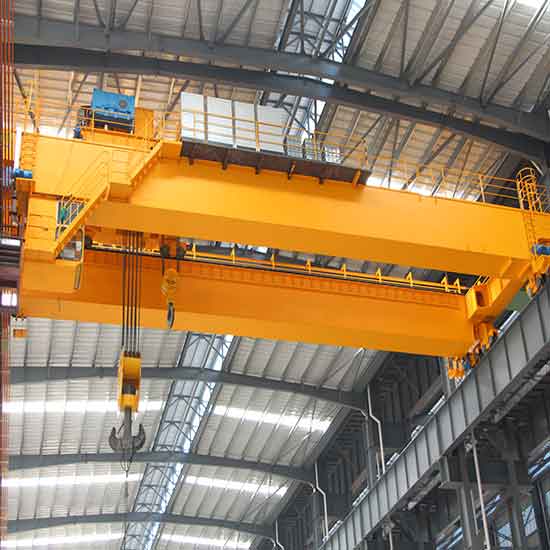
FEM/ DIN open winch bridge crane-European standard double girder overhead crane with open winch trolley, your heavy duty winch crane up to 320 ton.
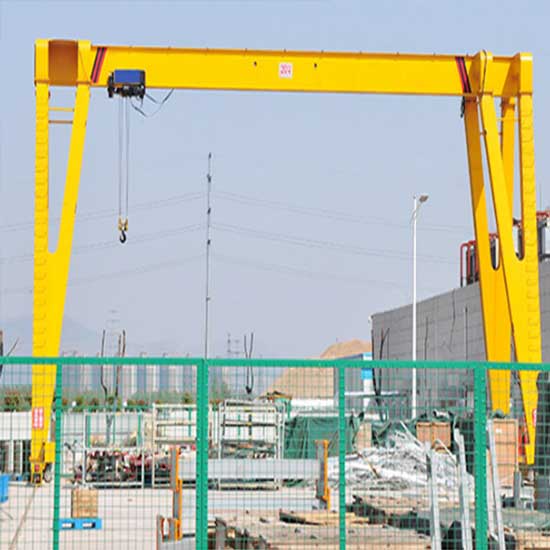
Single girder hoist gantry cranes, FEM,DIN & ISO standards: Single beam gantry cranes, European style box girder, FEM hoists for 3 ton, 5 ton, 10 ton, & 16 ton load handling.
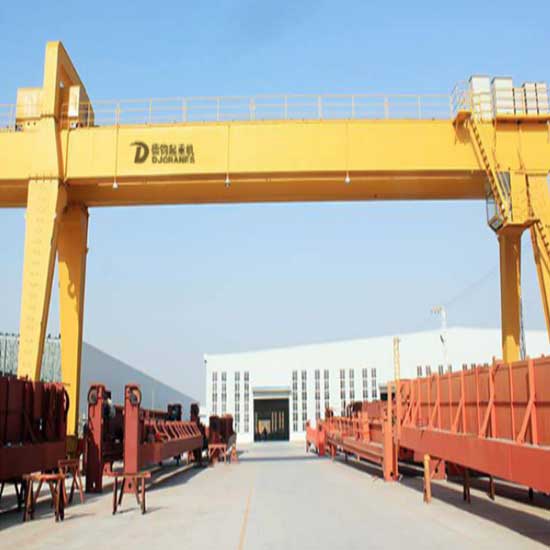
European style double girder hoist trolley gantry cranes: European type double girder gantry cranes with FEM standard wire rope hoists trolley with capacity of 5 ton up to 75 ton for sale.
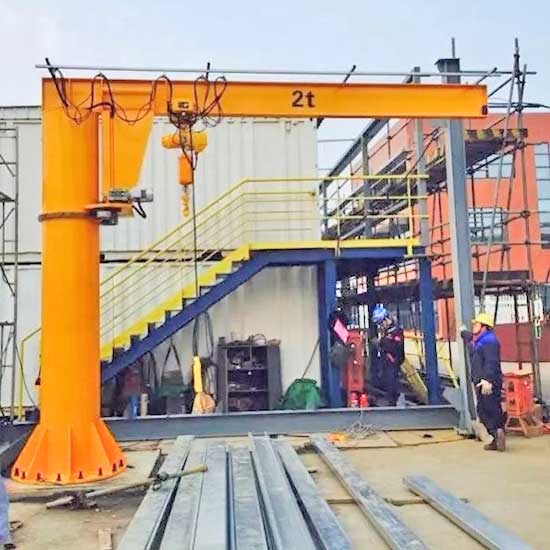
Free standing jib crane-Pillar mounted jib crane is a free standing jib crane with pillar jib mounted on floor, for short & crowded lifting, capacity up to 16 ton.
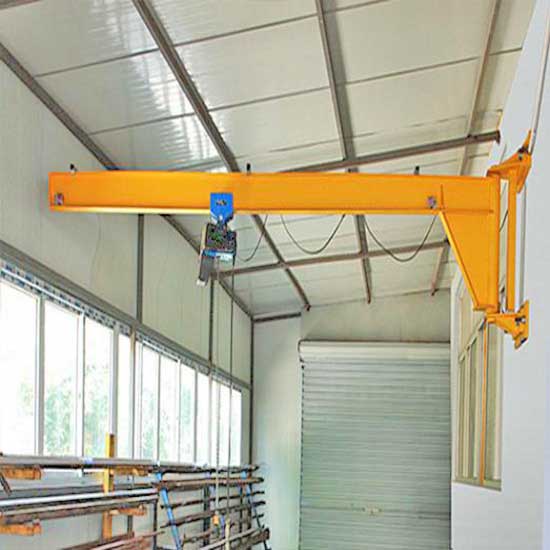
Wall mounted jib crane & wall bracket jib crane with I beam & tie rod design for light duty handling with capacity up 2 ton. or less building structure changes.
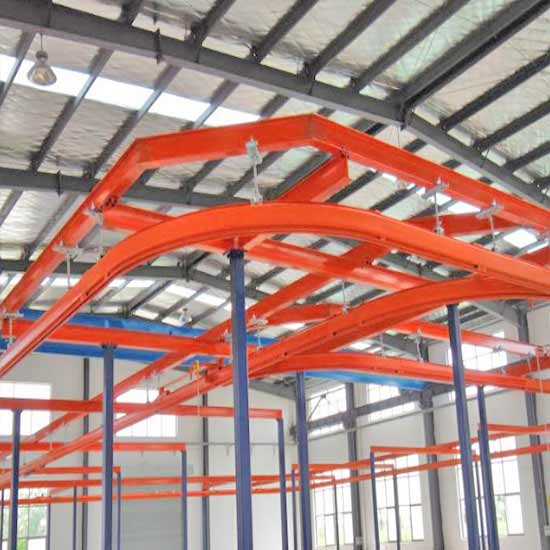
Light crane kbk system-kbk light crane systems, flexible kbk crane & rigid kbk crane, modular crane design, cost-effective workstation crane solution, tailored light duty bridge crane.
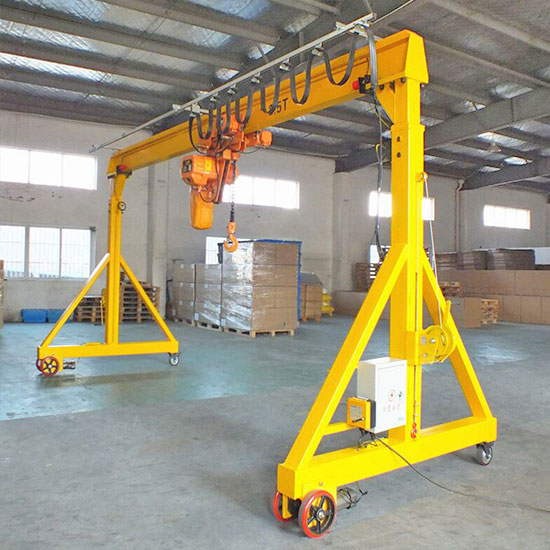
Portable gantry crane & Economical mobile gantry-250 kg - 10 ton portable gantry cranes & mobile gantry cranes with adjustable / fixed gantry for small & light material handling.
As one of the best crane manufactuer and supplier in China, we offer crane sevices for turnkey crane projects ie.overhead, gantry & jib cranes and other travelling cranes from crane degin, manufactuering & installation, and crane parts supplying, etc.
Contact us to get tailored overhead crane design, free CAD overhead crane drawing, defined overhead crane specifications for your particular application with lower overhead crane costs & good overhead crane price. Send an overhead crane inquiry to your latest eot crane price now!



